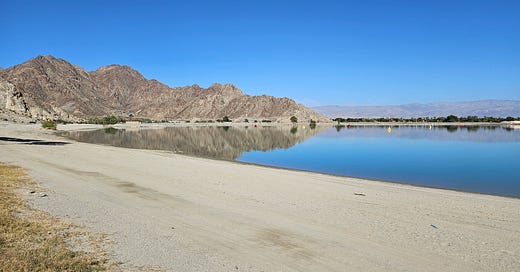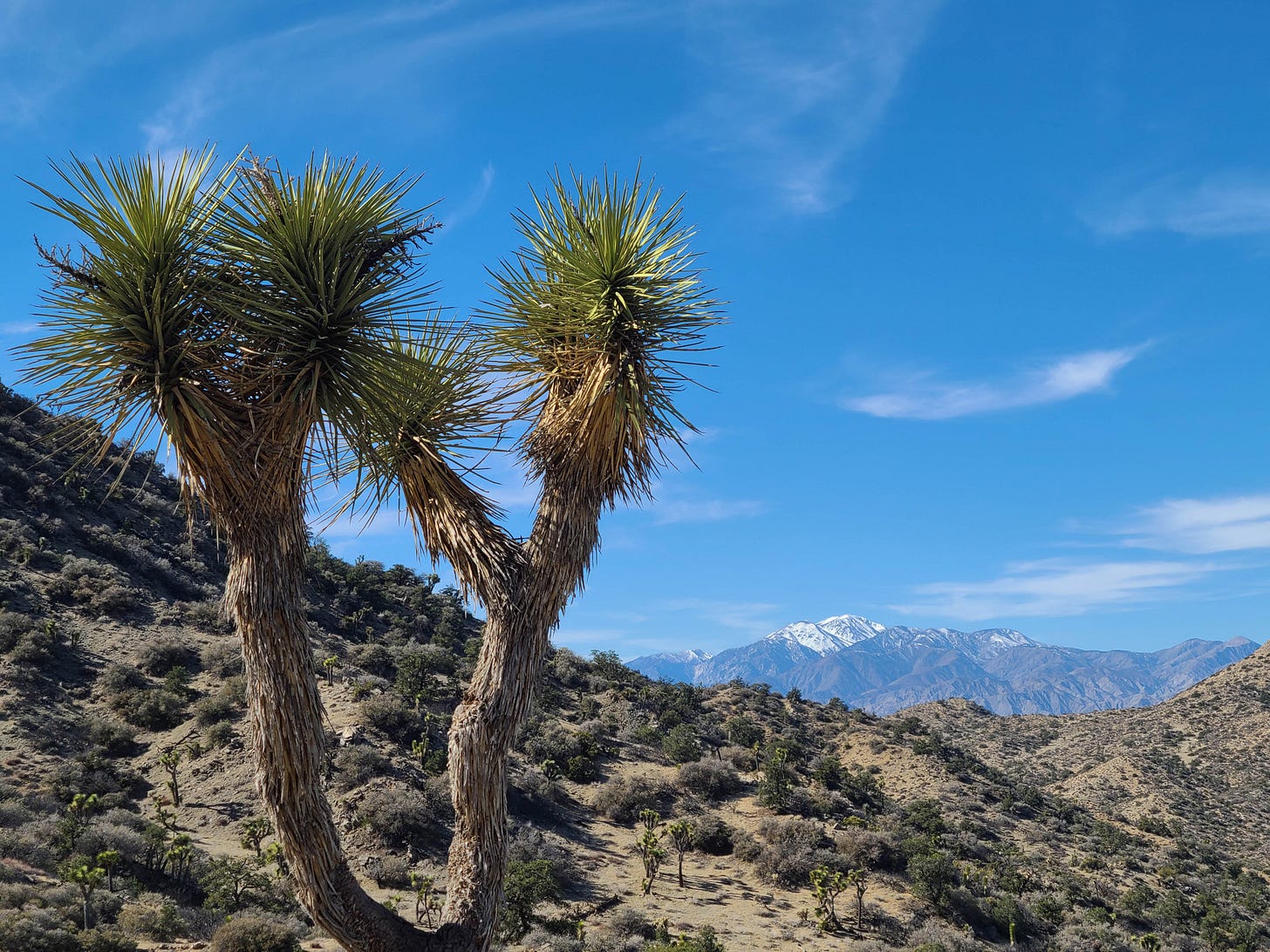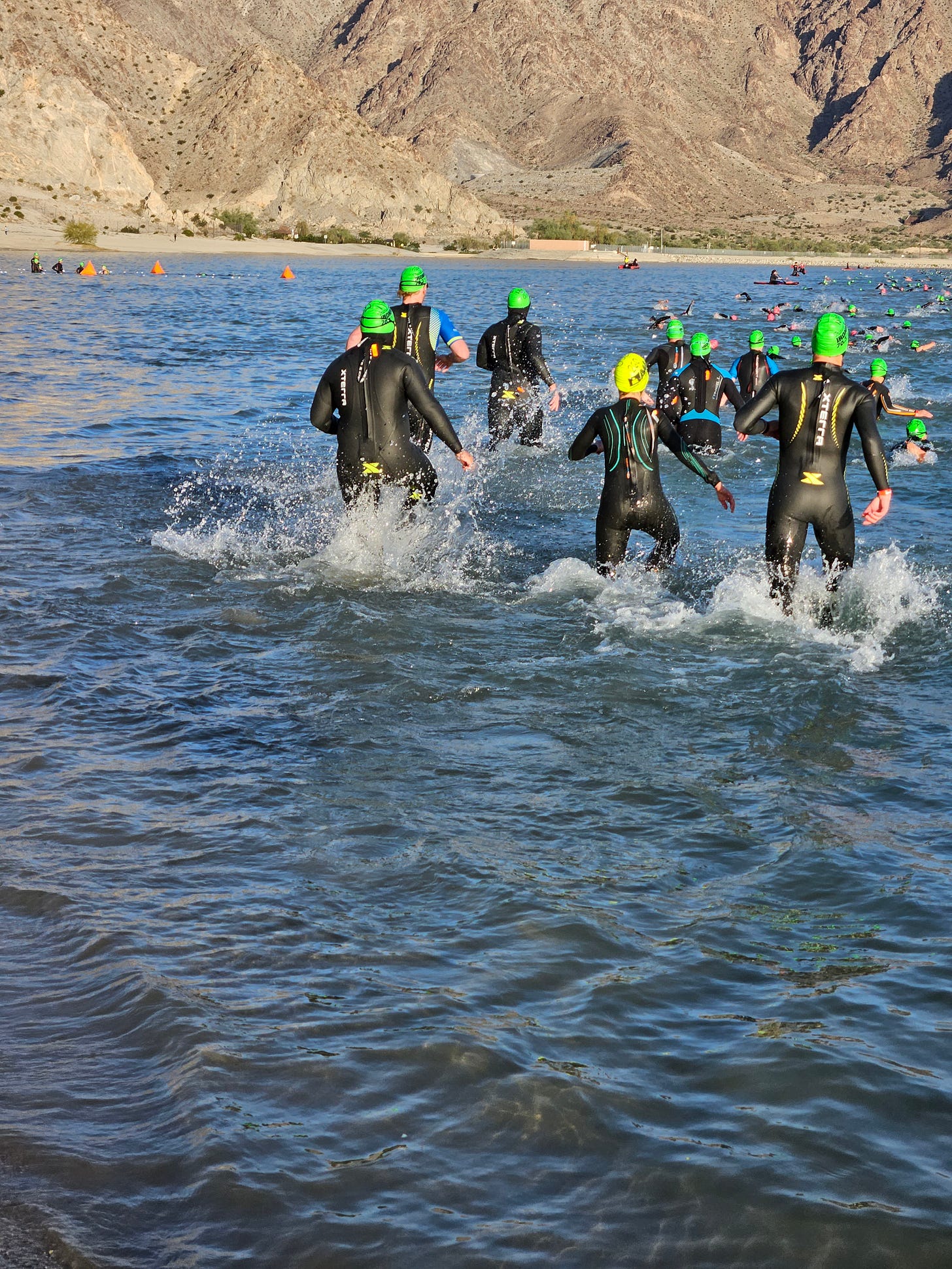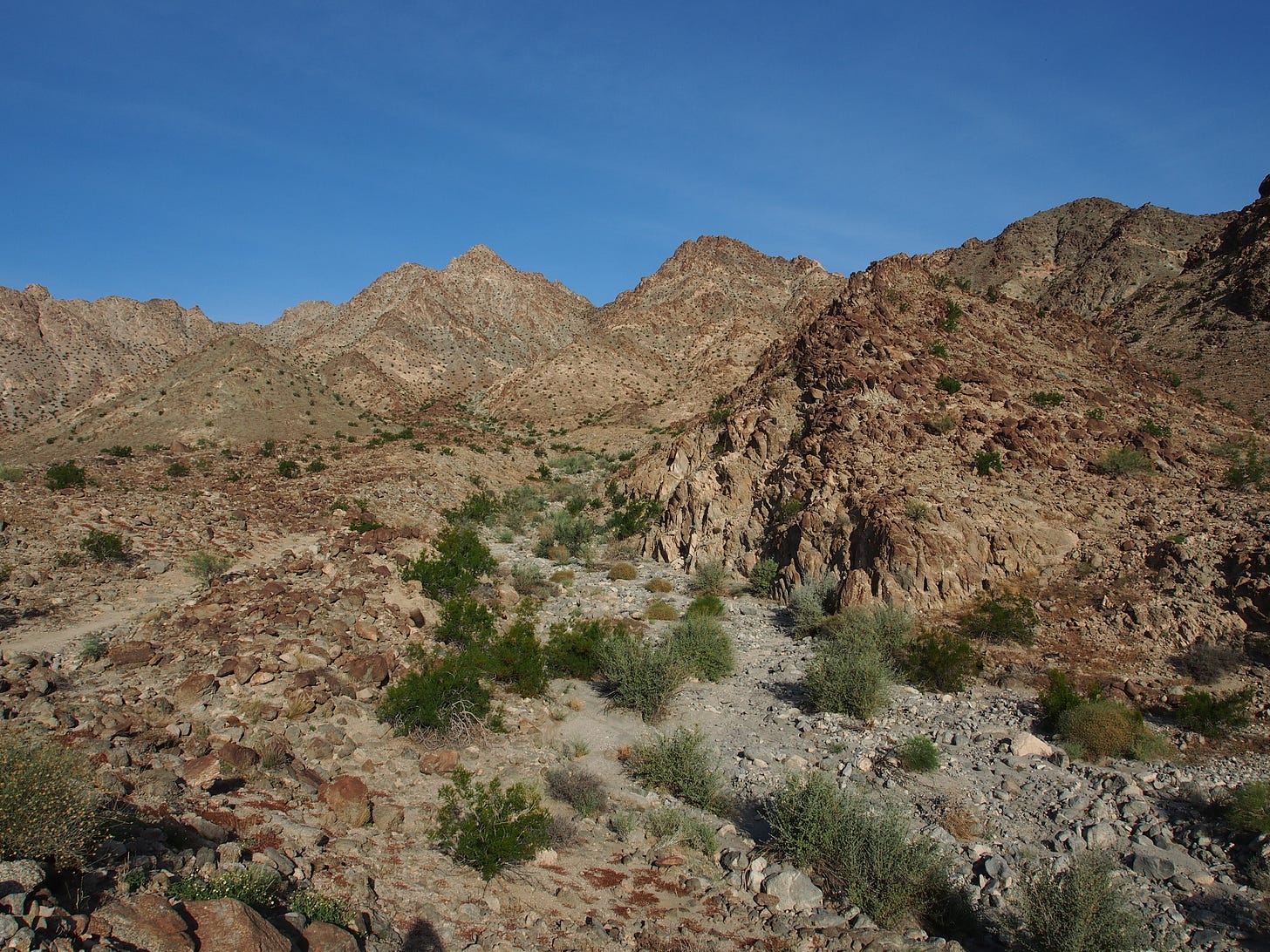This is also one a series of essays looking at places we travel through the lens of water. You can find earlier travel posts here.
"Fish do disgusting things in water"
"Fish do disgusting things in water", said WC Fields, when asked why he preferred to drink whiskey. I'm here to tell you that triathletes do even worse things, even if it is inside a wetsuit. Saturday morning last week found my wife, with twenty-five hundred other triathletes, dunking her rolled up wetsuit into a pool of chlorinated water for fifteen seconds under the supervision of a group of enthusiastic high school volunteers, and then hanging it overnight to dry.
The venue for this was Lake Cahuilla, La Quinta, CA, where the swim leg of the 2023 Indian Wells Ironman 70.3 triathlon was to start the next day. The park around the lake belongs to Riverside County; the lake to the Bureau of Reclamation; but the water in it to the Coachella Valley Water District. Normally no swimming or even boating is allowed, except for special events like this one. Are we going to drink this water later? Is that why the wetsuit dunking? The short answer to both these questions is no. The long answer is a bit more complicated.
The Coachella Valley Water District gets water from four sources, but it's really only two, and mostly just one, which is the Colorado River. Recycled water is listed, but is it really a source, or a reduction in consumption?
The Coachella Valley Aquifer is the proximate source of drinking water, but natural recharge cannot keep up with demand. Over the last century the water level in the aquifer has dropped, leading in places to land subsidence, so the district recharges the aquifer from two sources of imported water. The first of these is the California State Water Project, which transfers water from rivers in Northern California to the Central Valley and Southern California. Except that the water district doesn't use its entitlement to that water, but swaps it bucket-for-bucket with the Metropolitan Water District for water from the Colorado River Aqueduct (CRA) which brings water from Lake Havasu on the Colorado to Southern California.
The Colorado River Aqueduct enters the Coachella Valley at the eastern end and then runs along the northern side of the valley, forming the southern border of Joshua Tree National Park. It's mostly in tunnels here, but surface artifacts remain, such as the ruins of Berdoo Camp Aqueduct Construction Base. I'd be inclined to visit but I'd have to pass through the Berdoo Canyon Shooting Area. Online reviews are not encouraging.
The Coachella Valley Water District's share of this water is used for aquifer recharge at the Whitewater Spreading Area. Aquifer recharge sounds great but is not without its problems. The Colorado's water is different than that in the aquifer. It's saltier and carries contaminants such as fertilizer and pesticides. The Agua Caliente Band of Cahuilla Indians has contested the recharge as part of a broader effort to assert its sovereignty over water in the aquifer under the reservation and is pushing back on paying a replenishment fee to regional water authorities.
The other imported water input is the Coachella Canal which starts at mile 37 of the All-American Canal, built to carry water from the Colorado River at the Arizona border near Yuma to farms in the Imperial Valley. Unlike the Colorado River Aqueduct which muscles its way with lifts and tunnels across and through the mountains, the canal, built in 1949, relies on gravity for flow over its entire length, dropping one foot per mile from its start to its terminus 122 miles away in Lake Cahuilla. Running a little lower down the hillside than the Colorado River Aqueduct, the Coachella Canal runs past several interesting locations, such as Slab City, Salvation Mountain, and Bashford's Hot Mineral Spa. They're not there because of the canal but because of the hot springs. And the hot springs are there because the San Andreas Fault runs right along the hillside underneath the canal. What could possibly go wrong?
The Colorado is not a large river. It's thirty-seventh in the USA by volume, just above the Skagit river, depending on who is doing the measuring and where they're doing it. The definitive book on water in the west, including the Colorado, is Marc Reisner's Cadillac Desert. The book is such an icon that it's featured as a prop in Paulo Bacigalupi's The Water Knife, a near-future speculative fiction book that turns on California's outsize role in extracting water from a river it contributes nothing to. Fiction became fact shortly after I read the book, as Scottsdale, AZ, cut off water to a two-thousand-unit subdivision. Construction in the Coachella Valley has yet to feel the pain, but for how much longer?
The swimmers entered the water starting at 7 on the Sunday morning. I watched my wife complete her swim (for the curious, in a time of 39:19, a new PR and 5th in her age group) and head out on the bike. While waiting for the rest of the bikes to leave, I hiked the Cove to Lake Trail for an hour looking for evidence of the heavy rain that hurricane Hilary recently brought to the valley.
Extra vegetation had grown in the washes, and the rocks had been scoured clean of their usual rust-colored oxide layer. The runoff from those washes doesn't end up in the lake. Large berms looking like man-made glacial moraines channel and divert the flow towards the Whitewater Stormwater channel, about which we’ll learn much more in the next post.
In part 1, we've discovered how water gets into the Coachella Valley. In part 2, we'll follow the bikes and the water downstream to see where - and how far - it goes.
But first, I owe you an explanation for dunking the wetsuits in chlorinated water. If it's not because it's drinking water, then what's the reason? In short, Quagga mussels. From its terminus at Lake Cahuilla and before, water in the canal is tapped to irrigate agriculture, parks, and golf courses. These invasive mussels block the pipes that carry that water and are the reason for the strict conditions and limited use of the lake.
Thanks as always for reading or listening. Please feel free to comment and share.









The Water Knife is so bleak and much of it so likely.
Interesting how they consider the aquatic life. I approve!